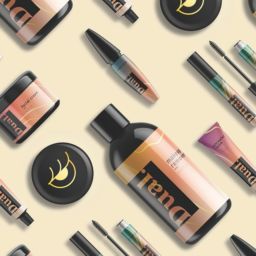Piggy Back Labels
These labels are made from combining two layers of adhesive substrate. The bottom layer forms the backing for the top. The label can be applied to any object as normal, the top layer can be a removable label that can be applied elsewhere, which may change the message or marking on the remaining label underneath.
Examples for where piggy back labels may be used:
- Direct Mail
- Prize Draws
- Logistics
- Wine cases
- Manufacturing
Those peelback, or piggyback, labels on products can provide additional information. But not everyone loves them. Here is some information about them as well as the pros and cons of using them for your CPG branding and packaging design.
What Are Piggyback Labels?
Piggyback refers to the label layers; a piggyback label combines two layers on a package. It’s really two labels, one on top of the other. There are really five layers to this type of packaging design: The face material, an adhesive, a release line, another adhesive layer, and the backing sheet that goes against the package. The top layer can be used or discarded to get to the bottom layer.
This layer on a layer approach can be applied on any surface. The consumer, shipper, or other party must pull off the top layer and apply it somewhere else.
For example:
- Transport return labels
- Coupons
- Feedback envelopes
- Receipts
- Logistics paperwork copies
- Product registration and warranty labels
- Inventory systems
- Imported products (where two or languages are need for shipping)
If you subscribe to magazines by mail you may not even realize there’s a piggyback label when it comes time to renew. But magazines usually place an outer paper wrap around the document with a postcard that you fill out with your name and address. You can pull off the top address label and stick it on the postcard instead of writing out your address.
The types of piggyback labels include:
- Nested piggyback labels make it easy for the customer to see and understand there is a second layer underneath. These labels are surprisingly easy to tear off.
- Flush cut labels are cut to the same size. This is a problem if you’re trying to get customers to peel back the top layer. They may simply not know the bottom layer is there. Plus, it’s harder to peel back the top layer.
- You can get around the problems inherent in flush cut labels by adding a tab. Flush cut labels with a tab make it a lot easier to find the peel-off layer and remove it.




 WhatsApp us
WhatsApp us